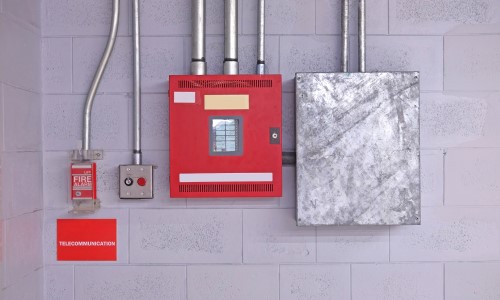In the realm of fire safety, modern technology has revolutionized the way we detect and respond to potential threats. Fire alarm systems, once simple bells and whistles, have evolved into sophisticated networks of sensors and advanced communication technologies. Beyond the familiar ring of a fire alarm, a complex web of innovations ensures swift and accurate responses to protect lives and property. One of the key advancements in modern fire alarm systems is the integration of intelligent sensors. Traditional smoke detectors could only identify the presence of smoke, often leading to false alarms triggered by burnt toast or steam. Today’s sensors are equipped with advanced technologies, such as photoelectric and ionization sensors, enabling them to distinguish between different types of particles in the air. This reduces false alarms and ensures that the alarm is triggered only in the presence of a genuine fire threat. Furthermore, the integration of heat sensors has added an additional layer of precision to fire detection. These sensors can identify rapid temperature increases, signaling a potential fire even before smoke is generated.

This early detection capability is crucial in preventing the escalation of fires and allows for quicker response times. Modern fire alarm systems are no longer isolated units but rather components of interconnected networks. This interconnectivity allows for seamless communication between different sensors and devices within a building. When one sensor detects a potential fire, it can immediately relay this information to other sensors, triggering a coordinated response. This networked approach enhances the system’s reliability and ensures that alarms are not only timely but also accurate. The integration of smart technologies is another notable aspect of modern fire alarm systems. Advanced systems can now be connected to building management systems BMS and the Internet of Things IoT. This connectivity enables real-time monitoring and remote control, allowing authorities or building owners to manage fire safety systems efficiently. Additionally, smart fire alarms can provide valuable data and insights, aiding in the continuous improvement of fire safety measures. Emergency communication has also been revolutionized by modern fire alarm systems.
In the event of a fire, these systems can automatically send alerts to occupants through various channels, including text messages, emails, and voice announcements. This ensures that everyone in the building is promptly informed and can evacuate safely. Moreover, some systems can integrate with emergency services, automatically notifying them of the situation and providing crucial information for a more effective response and go now https://southtexasss.com/fire-systems/. The adoption of wireless technology has simplified the installation and maintenance of fire alarm systems. Wireless sensors eliminate the need for extensive cabling, making installations quicker and more cost-effective. Additionally, wireless connectivity allows for easy expansion or modification of the system as the building’s needs evolve. As technology continues to advance, artificial intelligence AI is making its way into fire alarm systems. AI algorithms can analyze data from various sensors to identify patterns and anomalies that may indicate a fire risk. This predictive capability enhances the system’s ability to detect potential threats before they escalate, providing an additional layer of proactive safety. The evolution of fire alarm systems goes far beyond the familiar sound of ringing alarms.